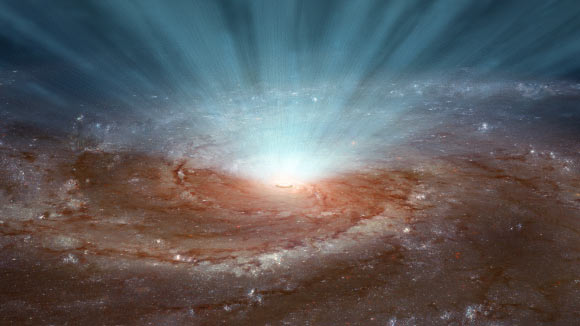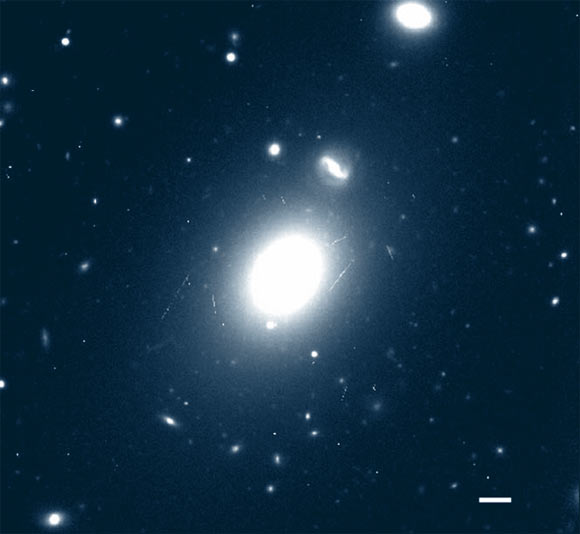Ultramassive Black Hole Found in Elliptical Galaxy Holmberg 15A | Astronomy – Sci-News.com
Astronomers using ESO’s Very Large Telescope (VLT) have discovered an enormous black hole at the center of Holmberg 15A, a supergiant elliptical galaxy and the central, dominant member of the galaxy cluster Abell 85.

Enormous black holes at the cores of galaxies blast radiation and ultra-fast winds outward, as illustrated in this artist’s conception. Image credit: NASA / JPL-Caltech.
Astronomers know about the class of the largest black holes, which they call supermassive black holes.
Typically, these objects, located at the centers of huge galaxies, have masses ranging between 100,000 and 10 billion times that of our Sun.
But the central galaxies of huge galaxy clusters contain monstrous black holes with masses over 10 billion times that of the Sun.
Scientists refer to black holes of this size as ultramassive black holes and only know of a few confirmed examples.
The newly-discovered ultramassive black hole resides in Holmberg 15A, a supergiant elliptical galaxy located in the center of a group of over 500 galaxies called Abell 85.
The object was discovered by astronomer Kianusch Mehrgan and her colleagues from the Max Planck Institute for Extraterrestrial Physics and University Observatory Munich.
“We obtained wide-field spectroscopic data of Holmberg 15A, the brightest cluster galaxy of the cool-core galaxy cluster Abell 85, from VLT’s Multi-Unit Spectroscopic Explorer (MUSE) on November 16, 2017, and August 10, 2018,” they said.

Gemini Multi Object Spectrograph image of the Holmberg 15A (center). Discovered in the 1930s by astronomer Erik Holmberg, this galaxy is located about 700 million light-years away in the constellation Cetus. Holmberg 15A’s central black hole is estimated to have a mass of 40 billion suns. By comparison, the mass of the supermassive black hole found at the center of our Milky Way Galaxy is only about 4 million suns. Scale bar – 10 kpc (32,616 light-years). Image credit: Juan P. Madrid & Carlos J. Donzelli, doi: 10.3847/0004-637X/819/1/50.
Holmberg 15A’s ultramassive black hole is estimated to have a mass of 40 billion times that of the Sun.
“This is the most massive black hole with a direct dynamical detection in the local Universe,” the researchers said.
“It is a factor of two larger than black holes in NGC 4889 (21 billion times that of the Sun) and NGC 1600 (17 billion times that of the Sun).”
“This black hole is not only one of the most massive known, it is also 4 to 9 times larger than expected given the galaxy’s bulge stellar mass.”
The team’s work will be published in the Astrophysical Journal.
_____
K. Mehrgan et al. 2019. A 40-billion solar mass black hole in the extreme core of Holm 15A, the central galaxy of Abell 85. ApJ, in press; arXiv: 1907.10608





